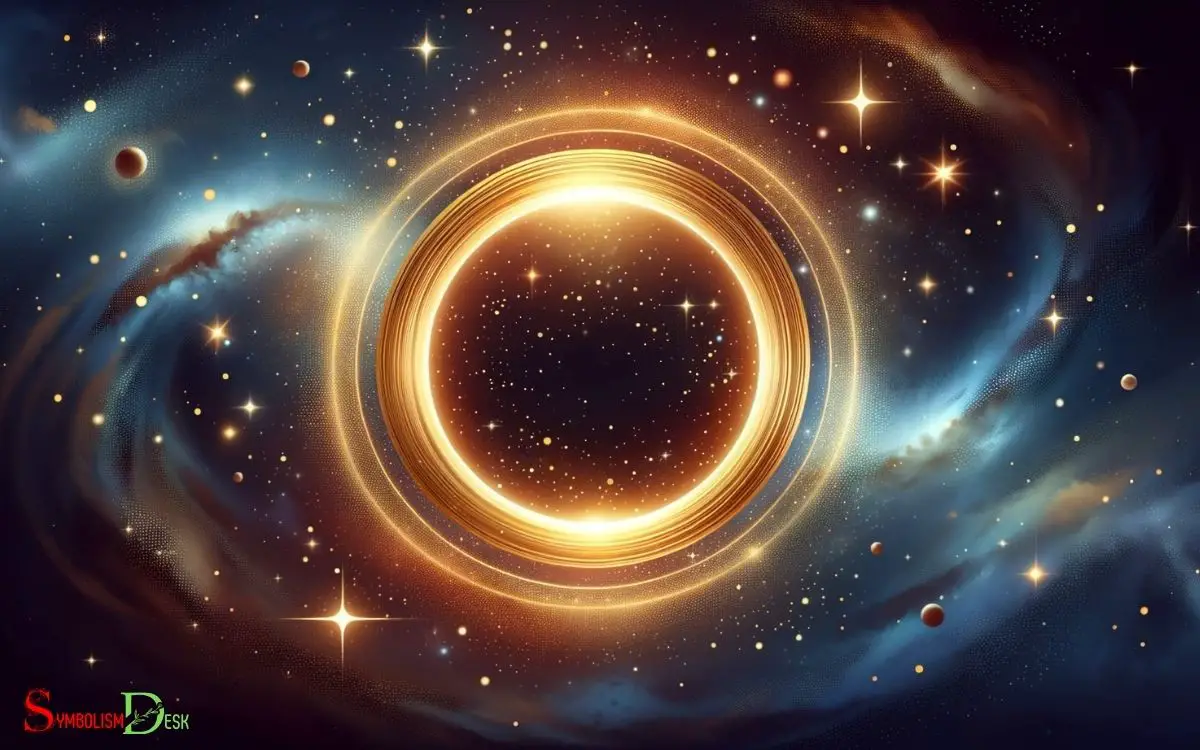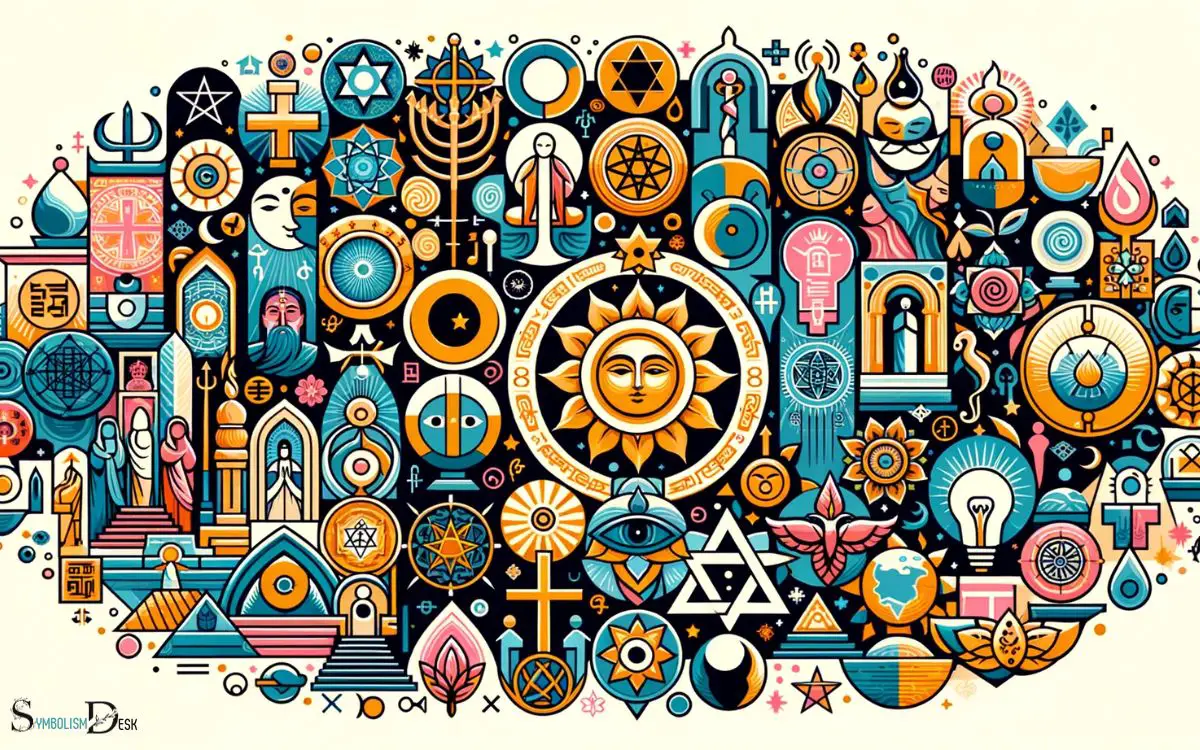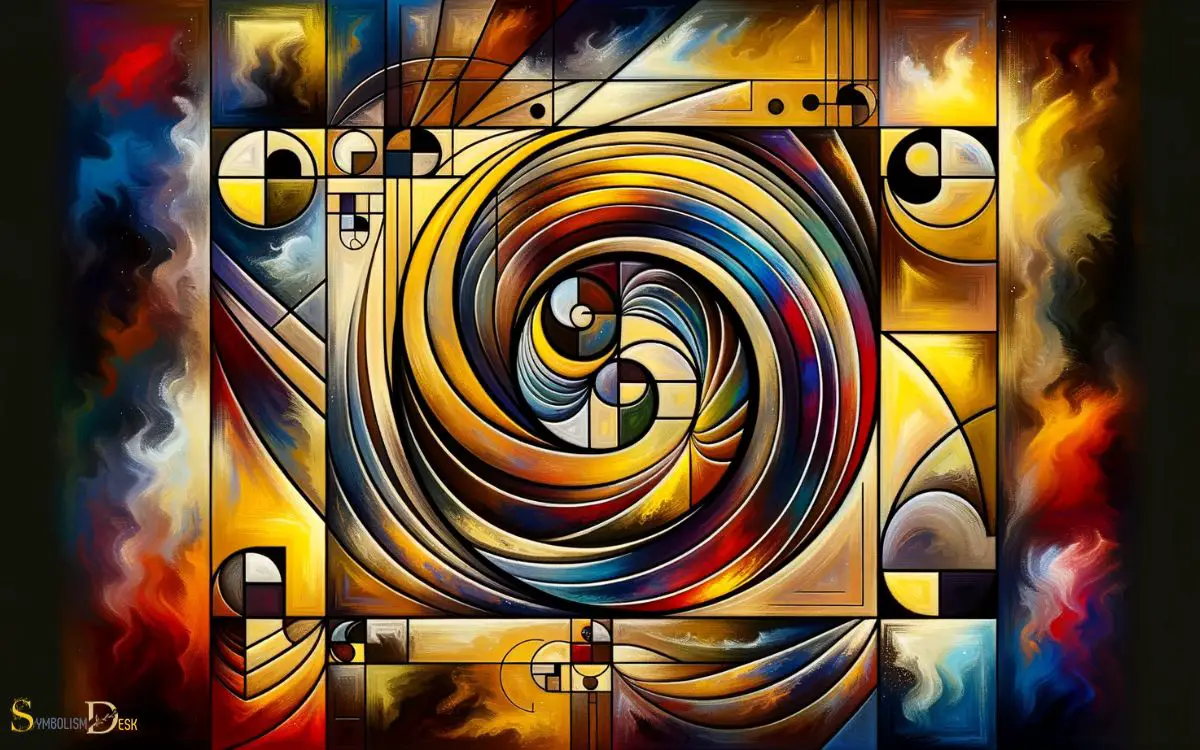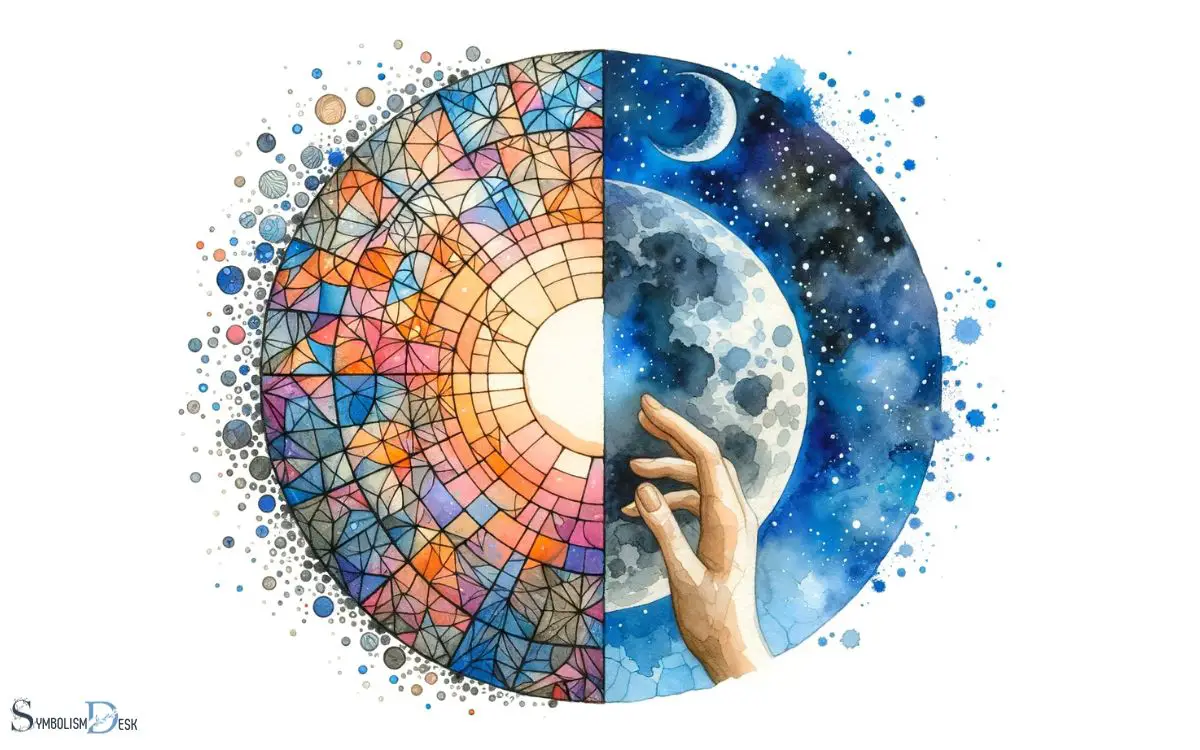What Is the Symbolic Meaning of a Circle? Wholeness!
The symbolic meaning of a circle represents notions of totality, wholeness, infinite, original perfection, eternity, and timelessness.
In various cultures, it is seen as a divine symbol that signifies unity, inclusivity, and cosmic balance.
The circle is a universal symbol with extensive meaning. It represents the infinite nature of energy and the inclusivity of the universe.
The circle is used extensively in symbolism and iconography across many cultures and religions, ranging from the Celtic knot, the Buddhist ensō, and the mandala in Hinduism and Buddhism. It symbolizes perfection because it is complete and retains its shape no matter what size it is.

Key Takeaway
9 Cultures: Symbolic Meanings of a Circle
| Culture/Philosophy | Symbolic Meaning of Circle |
|---|---|
| Native American | Life cycle, seasons, birth to death to rebirth, eternity |
| Buddhism | Enlightenment, perfection, oneness of universe |
| Taoism | Yin and yang, balance, unity in diversity |
| Christianity | Eternity, God (no beginning, no end), perfection |
| Hinduism | Dharma, Order in cosmos, perfection |
| Celtic | Cycle of life, seasons, fertility |
| Japan | Enso circle represents enlightenment, elegance, strength |
| African | Community, unity, eternity, femininity |
| Ancient Greeks | Perfection, eternity, the infinite, the goddess and femininity |
Spiritual And Religious Interpretations

The circle is a symbol of eternity, wholeness, and unity with no beginning or end. It represents infinite potential and the interconnectedness of all things in spiritual and religious interpretations.
The Circle As A Symbol Of Divinity
The circle is a powerful symbol that holds spiritual and religious significance in many cultures and belief systems. It represents a multitude of concepts, including unity, infinity, and divinity.
Let’s explore how the circle is interpreted in various spiritual and religious contexts:
The Circle In Buddhism And Hinduism:
- In buddhism, the circle, known as the mandala, signifies completeness and harmony. It represents the enlightened mind and serves as a visual aid for meditation and spiritual enlightenment.
- In hinduism, the circle symbolizes the cycle of life, death, and rebirth. It represents the eternal nature of existence and the cyclical pattern of the universe.
- Both buddhism and hinduism view the circle as a sacred geometric shape that embodies the divine and spiritual realms.
The symbolic meaning of a circle goes beyond geographical boundaries and is deeply embedded in spiritual and religious practices worldwide.
Its unique shape and infinite properties make it a fitting representation of the divine and the interconnectedness of all things.
Whether it is the mandala in buddhism, the cycle of life in hinduism, the eternal love in christianity, or the oneness of allah in islam, the circle remains a powerful symbol that transcends cultural and religious differences.
Symbolic Meanings In Art And Design

Art and design often incorporate symbolic meanings, with the circle representing eternity, wholeness, and unity. It is a powerful symbol that transcends cultures and holds deep meaning in various artistic expressions.
The symbolic meaning of a circle: symbolic meanings in art and design
The circle is a powerful symbol that holds deep meaning in various aspects of art and design. From ancient times to modern interpretations, it continues to captivate artists, designers, and viewers alike.
The Circle In Mandalas And Yantras:
Mandalas and yantras are spiritual and ritualistic symbols that often feature intricate circular patterns. They hold significant symbolic meanings in various cultures across the world.
Here is how the circle is interpreted in these art forms:
- Harmony and unity: The circle represents unity and the interconnectedness of all things. It symbolizes the idea that everything is interconnected and part of a greater whole.
- Wholeness and completeness: With no beginning or end, the circle symbolizes wholeness and completeness. It represents the eternal nature of existence and the cyclical patterns of life, death, and rebirth.
- Centering and balance: The circular designs in mandalas and yantras are often used for meditation and spiritual practices. They help in achieving a state of centeredness and balance, providing a focal point for the mind to find peace and clarity.
- Cosmic order: Mandalas and yantras are believed to represent the overall cosmic order and the structural framework of the universe. The concentric circles and geometric patterns depict the divine order and the interconnectedness of all things.
The Circle In Sacred Geometry:
Sacred geometry explores the geometric patterns and shapes that are believed to have inherent spiritual qualities.
Here is how the circle is understood in the realm of sacred geometry:
- Infinite potential: The circle represents infinite potential and the boundless creative possibilities of the universe. It is a symbol of the divine and the source of all creation.
- Divine proportion: The circle is often associated with the golden ratio, a mathematical ratio that is believed to exhibit harmonious proportions found in nature and aesthetics. This ratio is often used in art, design, and architecture to create visually pleasing compositions.
- Balance and harmony: The circle is seen as a perfect shape that embodies balance, harmony, and symmetry. It represents the ideal balance between feminine and masculine energies, nature and culture, and various dualities present in the world.
- Protection and connection: In sacred geometry, circles are considered protective symbols that create a harmonizing and balancing effect on the surrounding environment. They are believed to enhance connections with the divine and higher consciousness.
The Circle As A Design Element In Architecture:
The circle has long been utilized as a design element in architecture, adding aesthetic appeal and symbolic meaning to structures.
Here are some key aspects of its significance:
- Unity and integration: The circular shape in architecture represents the integration of different elements, creating a sense of unity and cohesion. It brings together various parts of a design into a harmonious whole.
- Symbol of perfection: The circle’s inherent symmetry and perfection make it an ideal symbol in architectural design. Its use can evoke feelings of beauty, balance, and timelessness, creating structures that stand the test of time.
- Continuity and flow: Circular elements in architecture, such as curved forms and circular openings, can create a sense of continuity and flow. They guide movement within a space and create a dynamic visual experience.
- Sacred and spiritual spaces: Circles are often used in the design of sacred and spiritual spaces, such as temples or meditation halls. They symbolize the divine and create an atmosphere conducive to introspection, harmony, and transcendence.
The circle holds profound symbolic meanings in art and design. Whether in mandalas, sacred geometry, it represents unity, wholeness, balance, and the eternal essence of existence. Its profound symbolism continues to inspire and engage artists, designers, and viewers worldwide.
Circle As A Symbol Of Wholeness And Completion

The circle is a powerful symbol that represents wholeness and completeness. It signifies unity, eternity, and the cyclical nature of life, making it a profound reflection of the interconnectedness of all things.
With no beginning or end, the circle embodies a sense of balance and harmony, offering a profound symbolic meaning of unity and perfection.
The Circle As A Symbol Of Wholeness And Completion
The circle is a powerful symbol that represents wholeness and completion. It holds significant meaning in various aspects of life, including its connection to the balance of opposite forces, the journey of life, and psychological wholeness. The circle’s connection to the balance of opposite forces is seen in the yin and yang symbol, where the dark and light halves represent complementary forces that are interconnected and interdependent. In the journey of life, the circle represents the cyclical nature of existence, with its continuous movement and evolution. Furthermore, in psychological wholeness, the circle symbolizes the integration of the conscious and unconscious aspects of the self, creating a sense of unity and completeness. The ice symbolism purity explained is also evident in the circle, as it represents the purity and clarity of thought and action.
The Circle And The Balance Of Opposite Forces
- The circle symbolizes the balance of opposite forces, such as yin and yang, light and darkness, and day and night. It represents the idea that opposing elements are interconnected and reliant on each other for harmony.
- The circle’s round shape demonstrates the continuous flow and cyclical nature of these opposing forces, emphasizing the need for equilibrium and acceptance of both positive and negative aspects.
The Circle And The Journey Of Life
- In the context of life’s journey, the circle represents the cyclical nature of existence. It symbolizes the never-ending cycle of birth, growth, death, and rebirth.
- Just as the circle has no beginning or end, life is seen as a continuous cycle, where every ending brings a new beginning. It reminds us that life is a journey of growth, learning, and transformation.
The Circle In Psychological Wholeness
- Psychologically, the circle serves as a symbol for completeness and unity. It represents the integration of all aspects of the self and the embracing of one’s authentic identity.
- The circle’s unbroken, continuous form signifies a sense of inner harmony, where all parts are recognized and accepted, leading to a more balanced and fulfilled life.
By understanding the symbolic meaning of a circle, we can develop a deeper appreciation for its significance in different areas of life.
Whether we contemplate the balance of opposite forces, reflect on the journey of life, or strive for psychological wholeness, the circle serves as a constant reminder of the inherent completeness and interconnectedness within ourselves and the world around us.
– What is the relationship between the symbolic meanings of a circle and a ring?
The symbolic meaning of rings is closely tied to the concept of a circle. Both symbols represent infinity, eternity, and wholeness. The endless nature of a circle mirrors the unbreakable bond of a ring, making it a powerful emblem of unity and commitment in various cultures and traditions.
The Circle In Nature And Science

The symbolic meaning of a circle in nature and science is significant. It represents unity, wholeness, and eternity, serving as a symbol of perfection and completion. In various disciplines, the circle is revered as a powerful and encompassing symbol.
In the natural world, the circle is a shape that can be observed in various aspects of nature and science.
From the patterns found in plants and animals to the mathematical calculations and physical phenomena, the circle holds symbolic meaning and significance.
Let’s explore the different aspects of the circle in nature and science using the following headings:
The Circle As A Shape In The Natural World:
- Flower petals: Many flowers, such as sunflowers and daisies, have petals arranged in a circular pattern, which helps them attract pollinators.
- Tree rings: The growth rings on the cross-section of a tree trunk form concentric circles, each representing one year of growth.
- Nests and burrows: Animals like birds and rodents create nests or burrows in circular shapes to provide protection and shelter.
- Spider webs: Spiders skillfully spin intricate cobwebs that often consist of circular patterns, aiding them in trapping prey.
- Waves and ripples: In bodies of water, waves and ripples propagate outward in circular patterns, resulting in a mesmerizing display.
The Circle In Mathematics And Physics:
- Pi (π): The mathematical constant pi is derived from the circumference and diameter of a circle. It is an irrational number that extends infinitely, showcasing the relationship between circles and numbers.
- Circular motion: In physics, circular motion refers to an object moving along a curved path, wherein the object experiences a constantly changing direction. This concept is crucial in understanding planetary orbits, centrifugal force, and many other natural phenomena.
- Refraction and reflection: When light encounters a curved surface, such as a circular lens or a water droplet, it undergoes refraction or reflection, leading to optical effects like rainbows, mirages, and the formation of images.
The Circle As A Symbol Of Perfection And Harmony:
- Completion: The circle represents wholeness and completeness, lacking any rough edges or corners. It signifies the idea of accomplishing a journey or achieving a goal.
- Harmony and balance: The symmetrical nature of a circle evokes a sense of balance and harmony, reflecting the interconnectedness and equilibrium within the natural world.
- Infinite cycles: Circles symbolize perpetual cycles and the interconnectedness of life, such as the cycle of seasons, day and night, birth and death, and the endless cycle of existence itself.
- Unity and equality: The shape of a circle lacks any hierarchy or preference for one point over another, representing egalitarianism and unity among all elements.
The circle’s symbolic meaning and presence in nature and science showcase its significance as a shape that embodies perfection, harmony, and the interconnectedness of the natural world. Whether observed in botanical marvels, mathematical calculations.
Conclusion
In conclusion, the symbolic meaning of a circle spans across cultures, representing unity, eternity, and balance—a universal symbol of profound interconnectedness.






